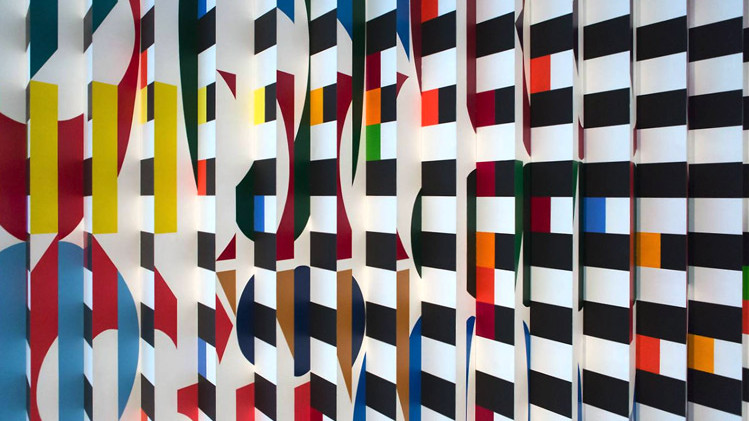Vasarely stated in 1955 in his famous Yellow Manifesto: "the art of tomorrow will be a collective treasure or it will not be art at all". Perhaps, at that time, the artists attached to the Op Art and Kinetic Art movements were not aware of the impact their works would have on the future of later art, but today there is no doubt that the concern and research surrounding the movement have left their mark.
Op Art was officially inaugurated with the exhibition "The responsive eye" that MoMA organised in 1965. In fact, it was about labelling an artistic trend that had sprung up a few years ago and one of which main milestones was the collective exhibition organised by the gallery Denise René under the title "Le mouvement". At that time, the works of Duchamp, Calder, Vasarely, Jesús Rafael Soto, Robert Jacobsen... lived together in an enriching dialogue that gave birth to a new style defined within geometric abstraction: the Kinetic Art.
Halfway between research and artistic production, the obsession of many of these creators was focused on, not capturing the movement, but incorporating it into their pieces, in a literal and physical way. From Calder's famous mobile-sculptures to multi-perspective works that force visitors to move around to find the exact point of view. Whether incorporated or projected, movement was the essence of this trend of art, where we cannot forget that the line of creative development was strongly linked to the recent sociological and psychological theories about the changing context of the 20th century and that it has its own background in the art world such as Futurism or Suprematism.
Op Art delves into another kind of movement, the one generated by the viewer's own perception through a game of optics or repetition patterns. Geometry and colour are fundamental in these works, where a simple contrast effect can produce a sense of depth or superposition of planes with a volume. Symmetries, asymmetries, minimalism, pure forms ... ingredients of a composition designed to deceive and confuse the senses of the observer.
The Würth Museum collects a total of 76 works (31 from its own collection) of the leading authors of these trends with pieces from 1921 to 2013. The colour, shape, light and perspective join around a paradigmatic collection of changes that the 20th century introduced in the art world. This exhibition opens the calendar of activities scheduled to celebrate the 10th anniversary of the opening of the Würth museum.
Source: https://www.art-madrid.com











